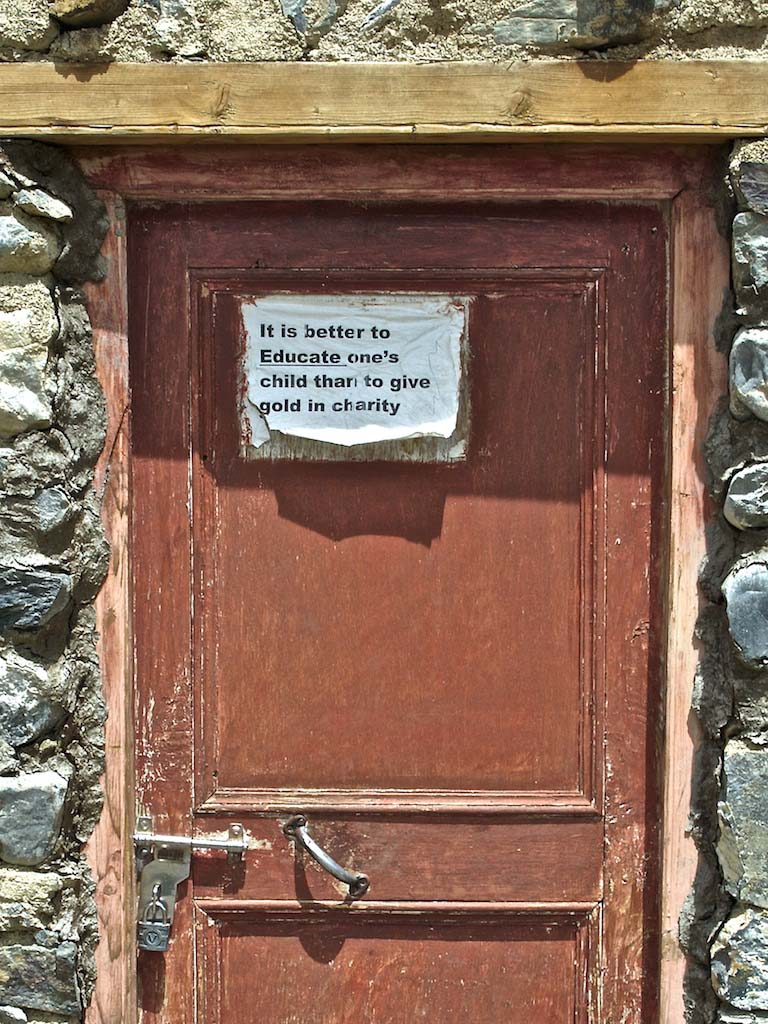Karnak, Ladakh.
Karnak is an area of southern Ladakh, northern India. In 2007 we trekked there for 12 days, starting and finishing on the Leh-Manali highway. Trek day 9. After lunch we leave Lahtoo and walk on. The morning’s greenery is left behind as the valley develops into a hot, wide plain. I walk alongside Stanzin and we discuss the effect Buddhism has on his view of life.
We pass long mani walls of stones carved with Om Mani Padme Hum an finally turn a corner to see the village of Dat and our tents pitched on a vivid green plain divided by narrow fast flowing streams. I’d been getting hot, tired and grumpy but the sight of the village lifts my spirits and I can’t resist the urge to look around. Dat is a winter village and in summer is deserted, the villagers living high up on the hills with their flocks of sheep and goats.
Vast piles of dung fill the walled compounds, next winter's fuel. BBC’s Radio 4 had a program about this area; life here is so hard that people are now slowly leaving to go and look for work in Leh, the main town of Ladakh. The low stone buildings have flat rooves of poplar, willow and compacted earth.
They need to be strong enough for the winter snow. Some of the houses have crude wooden doors, some are without doors, others are painted. Even here, where most people will be illiterate, one door has a sign promoting the value of education. The key to a better life?
A solitary dog is sleeping under the shadow of a line of prayer flags. The stone enclosures will be packed with sheep during the winter nights, the dung will be cut up into blocks, like peat, for fuel.

We rest at the beautiful campsite with it's vivid green grass, marmots keep popping up from their burrows. In the late afternoon we return to the village and find Nawang, a young monk, at the monastery, or gompa, tucked away behind the village near a wall close to the valley side.
Nawang is here on a punishment posting from Hemis while the main lama is away for a year. Hemis is a very large monastery that owns most of the land in this area. Nawang has been here three months, we don’t discover his misdemeanor but he wears a red and white headscarf with a cannabis leaf pattern. It’s a small simple gompa with a pleasant courtyard and five tall poplar prayer flags.
The prayer room has some good thankas, a decent statue of the 1000 armed Avalokiteshvara and wall paintings of Padmasambhava and Vajrapani. The paintings are fairly old and in reasonable condition; in spite of its remote location and the sense that people are slowly drifting away, this looks like a well used gompa that remains a vital part of the culture.
Padmasambhava is an actual figure from Buddhist history, Avalokiteshvara and Vajrapani are representations of aspects of Buddha nature that we frequently see on paintings, carved mani stones and statues.


Later in the afternoon two horsemen ride into the village, it seems the monk wants to buy barley from them. An hour later they return to camp with two bottles of Godfather beer, for us!
Read more about Buddhist monasteries and trekking in Ladakh and Zanskar.
